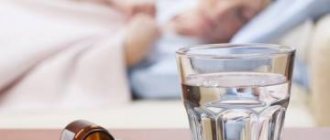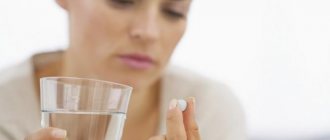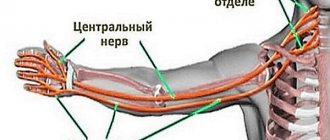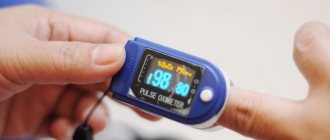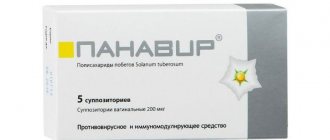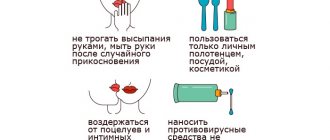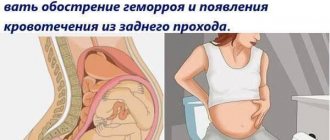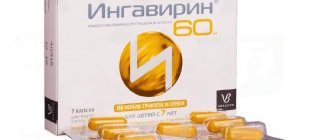The correct way to do inhalation with a nebulizer is this: you need to make sure that there are no contraindications to such a procedure (at least measure your body temperature), assemble the device and pour the medicine into it. Inhalation lasts 6-10 minutes, you need to completely “evaporate” the medicinal solution. It is important to breathe correctly:
- inhale through the mouth;
- exhale through the nose;
- at maximum inhalation, the breath is held for 1-2 seconds.
The frequency of inhalations is 3 times a day (general purposes), the duration of such therapy is a maximum of 10 days.
Benefit
The purpose of inhalation is to quickly deliver a therapeutic solution converted into fine particles to the area of pathology. During this manipulation, the medicine is sprayed and, along with air, enters the bronchial tree.
Well, given the fact that all colds are accompanied by a cough, the procedure in question can safely be called the main and effective method of treatment. Since this manipulation has such positive effects as:
- helps eliminate cough at the initial stage of development and blocks possible complications;
- the mucous membrane is moistened, due to which the throat softens, which is especially important for dry cough;
- mucus dissolves and is quickly removed.
Important: To benefit from inhalations, you must strictly adhere to all medical recommendations.
If we compare suspensions or syrups with inhalation, there is an obvious advantage in favor of the second. Because no cough suppressant penetrates as deeply into the lung tissue as those delivered by a nebulizer.
For sinusitis
The procedures are carried out after preliminary administration of vasoconstrictors and thorough cleaning of the nose. A nebulizer can also be used in such procedures.
In 20 minutes. after this, begin administering basic medications by inhalation:
- antiseptic;
- antibacterial;
- anti-inflammatory;
- hormonal (provide an antiallergic effect).
Salt and alkaline liquids are also used. They help to more completely cleanse the maxillary sinuses and moisturize the mucous membrane.
Indications for use
It is recommended to use the inhaler for the following negative phenomena:
- respiratory pathologies that occur with an inflammatory process in the respiratory tract and are accompanied by a sore throat, swelling and cough;
- bronchitis, acute and chronic;
- rhinitis, pharyngitis, tracheitis, sinusitis, tonsillitis and other diseases;
- asthma;
- pneumonia in the post-acute period;
- obstructive bronchitis and bronchospasm;
- bronchiectasis pathology;
- infections of the respiratory system, fungal origin;
- pulmonary tuberculosis during the post-acute period;
- cystic fibrosis;
- postoperative condition.
All of the above pathologies are accompanied by a cough. It can be wet, barking or dry. In such conditions, cough inhalers will become indispensable.
Duration of the procedure
How long to breathe in minutes:
| Age | Bronchitis | Laryngotracheitis | Sinusitis | Pharyngitis |
| Children | 7 | 3 | 5 | 7 |
| Adults | 10 | 5 | 10 | 15 |
How to breathe, through the nose or mouth through a nebulizer, depends on the type of disease and the medication prescribed.
Contraindications
In order for inhalation performed at home to bring only positive results, the patient should follow all instructions for its implementation. But first, familiarize yourself with all the available contraindications.
So, in what cases is inhalation contraindicated:
- at elevated temperatures;
- if the patient suffers from frequent nosebleeds;
- severe pathologies of the respiratory system;
- individual and intolerance to drugs;
- pathologies of the heart muscle.
In case of such phenomena, it is prohibited to conduct sessions with therapeutic couples. Moreover, the implementation of such procedures must be coordinated with a doctor. The specialist will select a suitable solution for cough inhalation, prescribe a course and frequency of procedures.
Nebulizer sanitization
Carefully read the instructions for the purchased device, as it describes in detail:
- Which parts can be boiled and which cannot.
- What disinfectant solutions can be used.
- Which components are sterilized?
Sanitation must be carried out before the start of treatment, as well as after it. This is especially true for sterilization. During the treatment process, if the diseases are not bacterial in nature, you can simply scald the components. However, before each procedure, all components must be well dried.
Instructions for carrying out
It does not matter whether the treatment is carried out with a special portable device or using improvised means, the main thing is that the treatment session is carried out strictly, adhering to the following rules:
- if inhalation is performed using a nebulizer, the patient should inhale the steam while sitting;
- It is not recommended to talk during the session;
- It is necessary to prepare and refill the medicinal solution immediately before the procedure;
- you need to pour medications into the inhaler chamber with a clean syringe;
- if the cough is provoked by inflammation in the upper part, you need to breathe through the nose, and if the lower part is inflamed, the vapor is inhaled through the mouth;
- boiled water is not used for therapeutic sessions;
- the duration of steam sessions for adults is 7-10 minutes, for children 3-5 minutes;
- You can dilute medicinal solutions using saline solution or Borjomi mineral water;
- at the end of the treatment session, the oral cavity and nasal passages are washed with boiled warm water without the use of antiseptics;
- the smoker should not smoke for at least an hour after the procedure;
- if therapy consists of several means, they must be used in sequence. First, the inhaler is filled with bronchodilators, then expectorants, and finally mucolytics are used.
Upon completion of inhalation, the nebulizer is disassembled, all removable parts are washed and disinfected, and the remaining medication is disposed of. If you follow the above recommendations, the cough will soon go away.
Don't miss useful information: Who created the coronavirus? Popular theories of the emergence of a mortal threat
Precautionary measures
Currently, the pharmaceutical industry offers a wide range of medicinal solutions for the procedure in question. However, before using them you need to familiarize yourself with the precautions:
- drugs intended for inhalation are recommended to be diluted in a 1:1 ratio with saline;
- for each session it is necessary to prepare a new mixture and dispose of the remains;
- medications such as Diphenhydramine, Papaverine and Eufillin do not have a positive effect when administered by inhaler. Therefore, they are not used for steam manipulation;
- Before each inhalation, the nebulizer parts must be disinfected;
- You cannot put essential oil into membrane models;
- do not use solutions with oils for pneumonia;
- if it is not possible to use a portable device for a treatment session, you can carry out treatment using improvised means, for example, a kettle.
Important: It is prohibited to prepare medicinal solutions from tablets or suspensions. Such dosage forms are not intended for inhalation.
In addition, before using any medicine for inhalation sessions, you should consult a doctor.
Inhalation frequency
What is the duration of nebulizer treatment and the frequency of treatments? Before answering this question, it should be emphasized that all points regarding inhalation treatment must be agreed with the attending physician. Only a specialist, based on the severity of the pathology, will be able to select a suitable drug, prescribe a course and frequency of procedures.
In general, such manipulations are performed as follows:
- at the first symptoms of a cold, 3-4 inhalations are performed on the first day;
- the next day, 3 sessions are indicated;
- if improvement is observed, go to 3 times;
- If the patient has purulent snot, 3 sessions per day are recommended. But, before carrying out such treatment, the nose must be rinsed with saline solution.
As for the duration of therapy, as a rule, the course can take from 5 to 14 days. In this case, the doctor makes prescriptions based on the patient’s well-being.
Possible side effects
Despite the effectiveness of the procedure in question, in some cases it is possible to develop negative side effects in the form of the following:
- bronchospasm;
- if the vapors are inhaled too deeply and intensely, a severe coughing attack may occur;
- dizziness;
- nausea.
Such symptoms indicate hyperventilation of the lung tissue. Therefore, you need to immediately stop performing manipulations, breathe calmly through your nose and calm down.
Algorithm for working with a nebulizer
It is important to have information on how to properly inhale and use the device. We offer you a step-by-step algorithm for working with a nebulizer:
- Wash your hands thoroughly with soap.
- Assemble the device according to the instructions. The basic package includes a compressor, a medicine cup, a face mask or mouthpiece, and connecting tubes. Connect the components, not forgetting to check the air filter.
- Prepare the medicine. It is recommended to use pharmaceutical medicine packaged in disposable nebulas. If you dilute the drug yourself, then take a 0.9% NaCl solution. The substance from the ampoule/vial is diluted with saline solution to a volume of 4 ml using a sterile syringe.
- Pour the prepared medicinal mixture into a container, attach it (glass) to the nebulizer tube, putting on top a mask that matches the patient’s size. The use of a mouthpiece is allowed (especially for adult patients).
- Turn on the device, making sure that the cup with the medicinal substance is in a strictly vertical position.
- Continue inhalation until steam stops coming out. On average, a session lasts about 10 minutes.
- Wait until the device cools down completely, wash the components in warm boiled water. Dry the device and put it back in its packaging.
Basic rules for inhalation with a nebulizer
are presented in the instructions for use included with the package.
Features of use in children
The main rule for using a nebulizer for children is a preliminary consultation with a local pediatrician. Only a doctor can prescribe a drug, correctly calculating its dosage. Self-medication is unacceptable.
Neonatologists recommend inhalations even for infants. Indications for the procedure are for colds, coughing, runny nose, as well as in the presence of neonatal distress syndrome caused by insufficient surfactant content.
Before the procedure, an older child (6 months or more) may be afraid, since the equipment makes a pronounced noise. Nowadays nebulizers are produced in the form of toys. Before the procedure, provide the opportunity to get acquainted with the device and play, which will save you from subsequent problems. The first few sessions may not go as it should, but over time the child will get used to it, calm down, and breathe correctly. The benefits will be significant.
There are a number of contraindications to inhalation for children:
- tendency to bleeding from the nose or lungs;
- sore throat, accompanied by purulent plaque;
- the presence of pathologies of the cardiovascular system, respiratory organs;
- restlessness, irritability of the child;
- temperature rise to febrile levels.
The use of mineral water or medications based on oil is not allowed.
If during the session the following signs appear: pain in the sternum, suffocation, dizziness or fainting, you should immediately call an ambulance.
Features of use in adults
Experts draw patients’ attention to a number of important nuances that should be taken into account when using a nebulizer:
- Inhalations should be done 1 – 1.5 hours after eating or playing sports;
- It is forbidden to take expectorants or gargle before the session;
- You cannot smoke two hours before the procedure, as well as 2 hours after it;
- remain calm and do not move during inhalation;
- free the neck area from things that make breathing difficult;
- the mask should fit tightly to the face, which promotes deeper penetration of the medicine;
- At the end of the session, you need to gargle with warm water; for children, drink a small amount of liquid (preferably drinking water).
In the absence of a nosepiece, inhalation of medicinal vapor is carried out only through the oral cavity. Adults should breathe correctly: hold their breath for 2-3 seconds, then exhale.
The inhalation session should not exceed 10 minutes. The therapeutic course is usually 8 – 15 sessions.
Nebulizer care rules
If you love to ride, you also love to carry a sled - this well-known saying also applies to the rules for using an inhaler. If you have used the device, then please put it in proper condition.
Read also Enema at home
After each use, the inhaler must be thoroughly washed and disinfected 1-2 times a month. If the device is used by different people, then more often, so that harmful microorganisms do not spread inside the small parts of the device.
The nebulizer cleaning technique involves the following steps:
- wash your hands with soapy water;
- disassemble the inhaler into parts - usually this is a mask/mouthpiece, tube, nebulizer;
- rinse the components thoroughly (for a minute) in warm water (the main unit cannot be washed, just wipe it with a damp cloth);
- Place the washed parts on a dry towel and wait until completely dry;
- Place the dried parts in packaging.
It is recommended to disinfect the device after every third use or after prolonged non-use. To do this, it is enough to boil the nebulizer, that is, subject it to heat treatment. The average sterilization time is 10 minutes. Before boiling, check whether the device can be processed in this way (this is indicated in the instructions).
The inhaler should be stored wrapped in a clean, dry cotton cloth. It is recommended to assemble the device immediately before the procedure.
Types of inhalations
According to the method of distribution of the drug into the respiratory tract, the procedure in question is divided into:
- steam, performed using improvised means;
- hardware, using a portable device.
Steam procedures are most often performed using a kettle, in which water mixed with medicine is preheated, and then a therapeutic session is carried out.
As for hardware rooms, in this case a special portable device is used, into which liquid is added, which is then converted into therapeutic steam. Such devices are capable of spraying the medicine into the smallest particles and delivering it to the most remote areas of the lung tissue. This explains the high efficiency of the procedures performed.
Using an inhaler
As mentioned above, an inhaler is an effective device that helps eliminate negative symptoms in the form of a dry, debilitating cough. The sprayed solution is able to suppress the negative effects of microbes and viruses, due to which recovery occurs many times faster. In addition, such a portable device has a number of other positive effects in the form of:
- acceleration of sputum formation;
- relieving swelling and irritation of the throat;
- converting a dry cough into a wet one.
Important: Removable parts of the inhaler must be disinfested before the manipulation and upon completion.
Due to this effect, the patient feels visible relief after the first session.
Using folk remedies
If a portable device is not available, therapeutic steam sessions are carried out using a kettle and folk remedies. For these purposes you can use the following:
- a mixture of garlic and onion promotes the rapid removal of sputum;
- A decoction of linden blossom and chamomile helps fight colds;
- calendula is considered an effective expectorant;
- Herbal preparations containing oregano, mint and lavender are also useful for coughs;
- enhances the removal of phlegm and converts dry cough into wet fir oil.
The use of such remedies should be agreed with your doctor. He will recommend a suitable treatment option taking into account the individual characteristics of the body.
Types of inhalers
How to choose the right cough inhaler for children so that the device is suitable for use by adults. First of all, you should understand what this portable device is.
So, an inhaler is a small electrical device used to deliver medications into the respiratory system. Such a device has a number of advantages:
- rapid absorption of medications;
- no side effects;
- prompt elimination of negative symptoms;
- the risk of overdose is zero.
Don't miss useful information: Solutions for inhalation with a nebulizer for coughs and runny nose
Such devices are capable of converting almost all medicinal solutions into a healing cloud. However, it should be noted that there are several types of portable devices, with different operating principles.
Steam
A simple device that converts medicine into a healing cloud. The steam model has a number of advantages:
- helps relieve cough;
- warms up the nasopharynx;
- eliminates congestion in the nasal sinuses;
- thins mucus.
However, such an inhaler has a positive effect only on the upper respiratory system. In addition, the device also has disadvantages. Since the medicine is supplied in the form of hot steam, there is a possibility of burning the mucous membrane.
In addition, not all drugs can be used on such models due to the destruction of medicinal properties when heated. Also, steam inhalers cannot be used for asthma and allergic rhinitis.
As for medicines, the following forms are used for steam models:
- alcohol tinctures;
- herbal decoctions;
- oil mixtures;
- mineral water.
Important: If the temperature of the water with the medicine is above +30C, such inhalation is considered hot.
In addition, treatment sessions using a steam inhaler are not recommended for young children. Since there is a risk of irradiation of the burn and drying out the mucous membrane, which can provoke bronchospasm.
Nebulizer
The most popular model is the compressor nebulizer. This portable device is suitable for use by the whole family. The operating principle of this device is to transform the solution into a healing cloud consisting of small particles.
For compressor models, the following dosage forms can be diluted:
- hormonal and antibacterial solutions;
- mucolytics;
- immunomodulators.
Compressor models are used to treat the upper and lower parts of the respiratory system. As for the disadvantages, these include the large size of the device and noisy operation.
Portable
The most popular cough nebulizer for children is the Mesh device. This model allows the use of any inhaled medications. The solution is converted instantly and silently.
However, these devices still have one significant drawback, their high cost compared to other models.
Ultrasonic
The main advantage of ultrasound samples is the ability to create a large, fine cloud for treatment, for which it is not necessary to wear a mask. Due to this feature, ultrasonic nebulizers are used when it is necessary to treat elderly people or children.
In ultrasonic models, a healing cloud is created by vibrating the emitter plate. And due to the conversion of the solution into tiny particles, the medicine reaches the most remote areas of the lung tissue.
Among the advantages of this sample are portability and quiet operation. At the same time, it is not recommended to add such dosage forms to the device as:
- antibiotics;
- antiseptics;
- hormonal agents;
- syrups and suspensions.
The active components of these medications are destroyed by ultrasound.
For wet cough
Having received good sputum discharge as a result of inhalation measures, you need to start taking the following medications:
- antiseptic (see table);
- anti-inflammatory;
- antibacterial;
- hormonal.
To prepare a solution from Furacilin, you need to dissolve 1 tablet in 100 ml of saline solution. But it is better to purchase a pharmaceutical drug in liquid form. Carry out the procedures twice a day, observing the dosage of 4 ml.
Miramistin is suitable for children of all ages, for any inhalers. Usually the product is used in its pure form (3-4 ml); very young children can be diluted 1:1.
Recipes for inhalation solutions
Folk remedies are an indispensable assistant when the question becomes how to treat a debilitating cough. To eliminate such negative symptoms, resort to the following recipes:
- solution based on soda and salt;
- herbal mixture of licorice, coltsfoot and sage;
- Inhalations with small pine, fir or eucalyptus are also useful.
- sea salt, chamomile and St. John's wort.
Soda and salt
To prepare this product, take a teaspoon of each component and add a liter of hot water. Mix everything thoroughly and inhale the vapors for 15 minutes. This product disinfects, inhibits the activity of microbes, promotes the removal of mucus and improves the general condition of the patient.
Collection of licorice, coltsfoot and sage
All components are taken in equal parts and poured with boiling water. Then, the mixture is allowed to brew, after which inhalation is carried out.
Essential oils
Inhalation with essential oils is also considered an effective way to eliminate negative symptoms. To carry out the session, you need to add a couple of drops of oil to hot water. The session lasts 10-15 minutes. After the first inhalation, the patient will cough less; after a couple of days, the unpleasant symptom will go away completely.
However, it is important to remember that before using such products you need to consult a doctor in order to exclude the possibility of developing side effects.
For dry cough
Often, a dry cough occurs as a result of laryngitis, tracheitis and other similar pathologies. In this case, inhalations are prescribed without fail. Since this method of therapy has a complex effect:
- eliminates swelling of the mucous membrane;
- converts a dry cough into a wet one;
- blocks narrowing of the larynx.
Don't miss useful information: Inhalations for pneumonia in adults and children
For dry cough, inhalations with antiseptics, mucolytics and bronchodilators are prescribed. During therapy, it is recommended to maintain consistency.
First, they inhale bronchodilators, after 30 minutes they conduct a session with mucolic drugs, then after the sputum is discharged, the session is completed with antiseptics. Such treatment can be performed at any convenient time. The main thing is to follow the sequence.
For wet cough
If the patient suffers from a wet cough with difficult to separate sputum, therapy should include drugs with mucolytic and anti-inflammatory effects. Inhalations begin with the use of mucolytics. Then they pause for 30 minutes to allow the mucus to drain and complete the treatment session with inhalation of an anti-inflammatory agent.
Preparations for the treatment of cough by inhalation
When choosing a solution for inhalation, the question arises, what types of medications are used for the nebulizer? The following are considered the most effective:
- Lazolvan;
- Mukaltin;
- Ambroxol;
- Berodual;
- Ambrohexal.
In addition, in severe conditions, doctors prescribe the use of hormonal drugs:
- Ventolin;
- Pulmicort;
Important: All medicinal solutions must be diluted with saline in a 1:1 ratio before use.
These medications are able to quickly penetrate into the very center of the pathology and inhibit the action of viral agents, while simultaneously eliminating negative symptoms.
Bronchodilators
Bronchodilators are used to increase the lumen in the bronchial tree and eliminate spasms. The following types of medications are most often prescribed:
- Berodual;
- Atrovent;
- Bromhexine.
However, it is important to remember that the use of these drugs must be strictly agreed with your doctor.
For thinning mucus and expectoration
Alkalies are considered the most effective means for thinning sputum. These solutions thin the mucus, moisturize the mucous membrane and improve the general condition of a person. The most popular are saline solution and mineral water.
Important: Lidocaine is considered an excellent remedy for relieving dry cough. The ampoule with the medicine is diluted with saline solution and inhaled.
Inhalations with mineral water and saline can be carried out up to 4 times a day. In this case, before use, the gases must be released from the mineral water, and the saline solution must be slightly warmed to room temperature.
Anti-inflammatory
To suppress the activity of microbes, anti-inflammatory medications are prescribed:
- Dekasan;
- Miramistin;
- Furacilin.
These antiseptics have a strong anti-inflammatory effect after the first procedure.
Precautionary measures
To ensure a safe procedure, you must follow the following precautions:
- use extreme caution when using inhalation preparations containing oils - when sprayed, such components form a film on the mucous membrane of the respiratory tract, which provokes severe swelling;
- Any medications for the nebulizer should be diluted only with saline solution at room temperature;
- a strict contraindication to inhalation is a sore throat with purulent plaque on the larynx or palatine tonsils;
- even an increase in body temperature to 37.5 degrees is a contraindication to the use of a nebulizer.
Watch this video about what diseases a nebulizer will be most effective for:
Features of treatment
Inhalation treatment helps eliminate a number of pathologies of the respiratory system and overcome unpleasant symptoms. Moreover, each age category has its own rules for diluting medications, frequency of administration and duration of the session.
Children
It is recommended to give inhalations to children using a nebulizer. Carrying out such a procedure requires compliance with a number of rules:
- the manipulation is carried out an hour before or after a meal;
- Before the procedure, you need to measure the temperature; if the readings are elevated, inhalation is not carried out;
- You should not carry out the manipulation even if the baby is capricious;
- to perform this procedure, use only solutions prescribed by a doctor, preheated to room temperature and diluted with saline;
- Similar sessions can be carried out for children starting from the age of two months.
The famous pediatrician Komarovsky also advises using a nebulizer to treat severe ailments of the respiratory system. But in case of mild acute respiratory infections and acute respiratory viral infections, you should not use this device.
Because, in his opinion, this only contributes to the active spread of microbes throughout the bronchial tree.
Pregnant
Pregnancy is a wonderful time for every woman. However, during the period of bearing a baby, expectant mothers are often exposed to various colds. To eliminate negative symptoms, you need to use only relatively safe means, performing treatment using inhalations.
For dry cough, expectant and nursing mothers can use saline solution. If you are worried about a wet cough, it is permissible to prepare a solution of Decasan with mineral water.
Elderly patients
Elderly people suffering from respiratory pathologies also benefit from inhalation. Such patients are allowed to use bronchodilators, mucolytics and antiseptics. However, it is important to remember that in old age, many patients suffer from other chronic pathologies.
In view of this, only a doctor should select the solution, taking into account all the characteristics of the elderly person’s body and his individual intolerance to the active components, provided that there are any.


